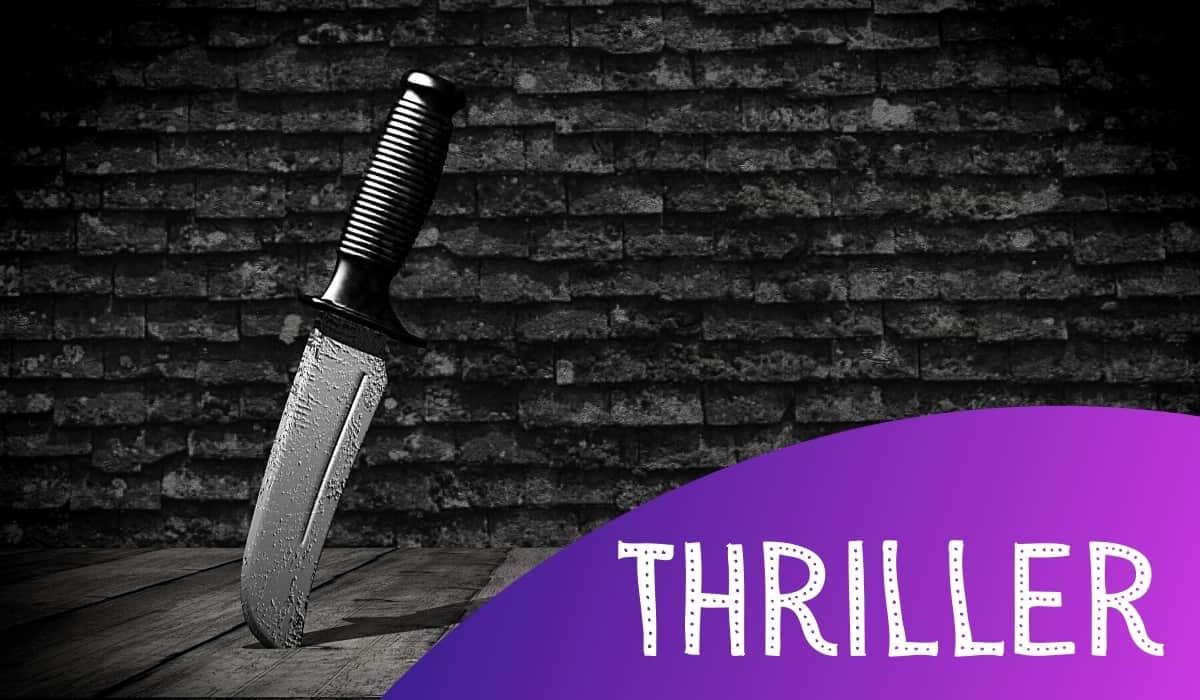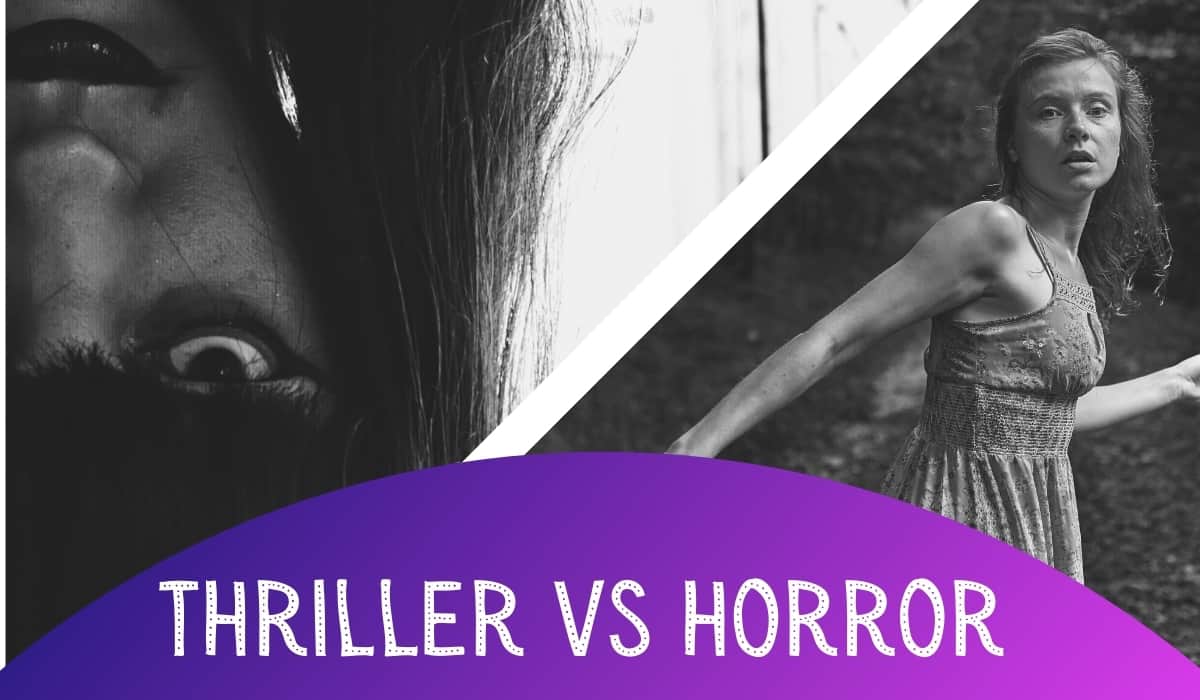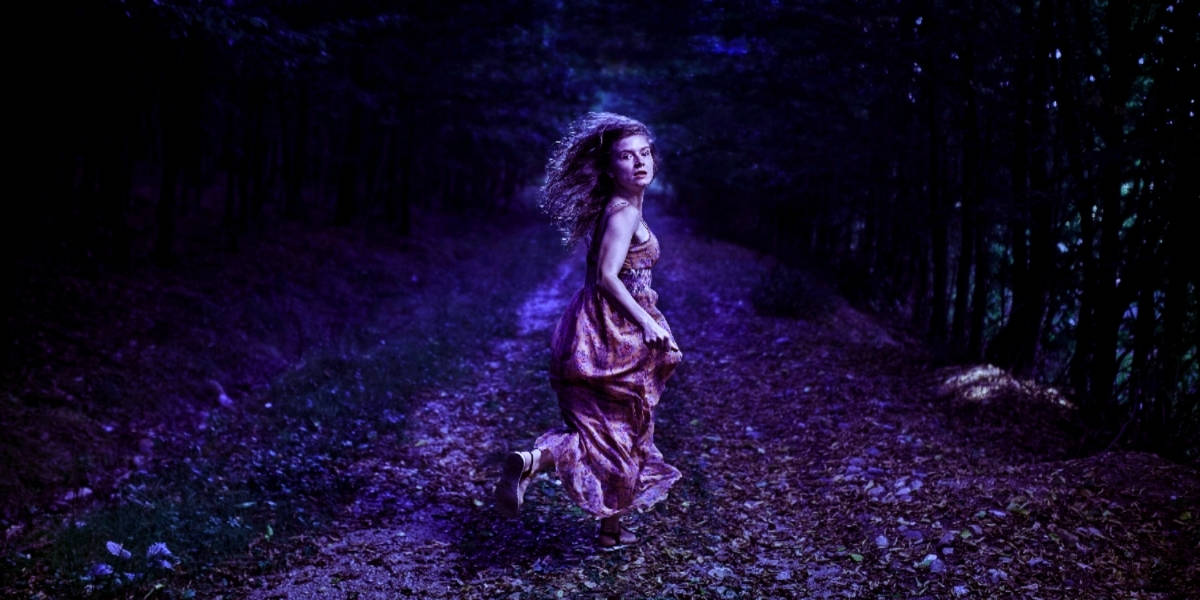Many avid readers love both the thriller and the horror genre, as they can both evoke similar emotions. But once we peek under the surface, it becomes clear that these two subgenres are actually quite different from each other. They both have subtle and not so subtle nuances that set them apart.
So what are the differences, and how can you tell which category a work of fiction fits into? I’ve taken a deep dive and examined the basic elements of these popular subgenres, so you can easily pinpoint if a book is classed as a thriller or a horror.
Thriller

Thrillers work on one overarching premise; suspense. That’s right, the more suspense packed into a story, the more comfortably it sits within the thriller subgenre.
A thriller writer will spend much longer building tension and keeping you right on the edge of your seat than a horror writer would. The outcome might be the same, eg. A character is the victim of a deadly attack, but the way they get there is quite different.
In a thriller book, the killer may spend endless chapters stalking their unsuspecting victim. The reader might have an inkling of what’s coming, but there’s a heavy dose of uncertainty. All we can do is sit back and agonizingly await the victim’s fate.
Another major distinction between thriller and horror stories is that thriller stories tend to take place in a realistic setting. There are way fewer ghosts, ghouls, and demons in thriller stories and more the type of murderers you might read about in real life.
Instead of a flesh-eating zombie, the villain in a thriller story is more likely to be the next-door neighbor, somebody’s boss, or even a family member.
Plot twists, red herrings, and cliff hangers are some other key features in a good thriller story. It’s hard to maintain a feeling of suspense without a few unexpected twists and turns. After all, it’s no fun for the reader if they know what’s coming. A good thriller story will keep the reader on their toes throughout the book.
Horror

Horror stories often encompass some of the elements of a thriller, but there are plenty of features that set them apart.
While the main aim of a thriller tale is to build to a climax or crescendo, a horror story’s main purpose is to evoke feelings like terror, fear, or disgust.
A horror will also often aim to startle the reader and make them jump. The main focus is always on the scary elements of the story. That’s why sensitive folks (myself included!) might even have trouble walking to the bathroom in the night after reading a good horror book, thanks to irrational fears of ghosts or zombies lurking around the corner.
Classic horror themes include supernatural beings like poltergeists and demons, the occult, and the evil undead. Horror can also feature gory and gruesome scenes. Look out for ax-wielding psycho killers that leave a grisly trail of blood and guts in their wake.
Another super popular theme in the horror subgenre is zombies. Especially in the last 20 to 30 years, readers have gone wild for all things related to the living dead.
A good horror book tends to appeal to the reader’s morbid curiosity and leaves us with a sense of underlying dread. These stories often target a primitive survival level that exists within us all.
They explore the darker places in our psyches and bring some of our innermost fears to the surface.
In some ways, horror acts as a kind of catharsis; it allows the reader to explore these dark themes while knowing they can put the book down at any time. It’s a kind of tentative dance between running from the dark, morbid and terrifying truths or staring them head-on.
After all, most of us have deep-seeded fears, and the horror subgenre allows us to face them through the imaginary lens of fiction.
An Example of Thriller vs. Horror

Now we’ve looked at the key differences between thriller and horror fiction, let’s explore a couple of examples.
Classic Thriller Fiction
A classic example of thriller fiction is The Silence of the Lambs by Thomas Harris. In this book, which was made into an all-time best selling movie, the themes are terrifying but unnervingly set in reality.
The protagonist of the story is Clarice, a young FBI officer who is tasked with entering the psyche of an evil and wickedly clever cannibal named Hannibal Lecter.
For years, Hannibal has been locked away in a maximum-security facility thanks to his heinous crimes. Now, in order to solve a new string of murders, Clarice must venture into the darkest depths of this psychopath’s mind to uncover the reasons behind his unspeakable obsession.
Of course, this dangerous path takes Clarice into some hair raising and life-threatening situations that dip in and out of some classic horror themes. But more than anything, the Silence of the Lambs is a classic thriller tale.
It’s a story of extreme suspense that keeps the reader glued to the pages with their heart in their throat. There are no supernatural elements, no zombies, no evil demons, and most of the killing is implied rather than played out in graphic, gruesome detail.
It’s a psychological story that, terrifyingly enough, could happen in real life. Maybe that’s why this is one of the world’s most well-loved thriller stories of modern times.
Classic Horror Fiction
A classic example of horror fiction is The Woman in Black by Susan Hill. Though it was written in 1983, this book harks back to a much earlier time, evoking the bleak and rigid Victorian period.
Set in a peculiar small town nestled in the misty English moors, Hill uses this archetypal imagery to transport the reader into an unfamiliar, unsettling world.
The protagonist is Arthur Kipps, a young, up and coming solicitor from London who has headed north on an assignment. He must attend the funeral of the mysterious Mrs. Alice Drablow and settle her affairs. But instead of the usual routine formalities he’s used to with this kind of work, he finds himself embroiled in a sinister and terrifying series of events.
The creepy old house is filled with odd artifacts. Furniture moves by itself, and the cries of children can be heard from the thick winter fog outside. And, most terrifying of all, there’s an undead entity waiting for him; the woman in black.
Like so many of the best works of horror fiction, this classic ghost story calls upon some of the thriller genre’s most well-loved literary devices, but it’s a horror story, through and through.
The supernatural, ghostly themes, spooky setting, and spine-tingling jump out of your seat moments solidify The Woman in Black as one of the best loved works of modern horror fiction.
Conclusion
So there we have it, the differences between thriller and horror fiction. As you can see, many of the greatest books of our time incorporate elements from both of these subgenres, keeping us both terrified and in suspense.
But I hope now you can pick out the key attributes that separate a classic thriller story from a classic horror story.
What are your favorite books from these two popular subgenres? Let me know in the comments below.
Check out these other great posts!
25 Best Horror Books of All Time
9 of the Best Young Adult Vampire Books
20 Best Books to Read if You’re Obsessed With Serial Killers





